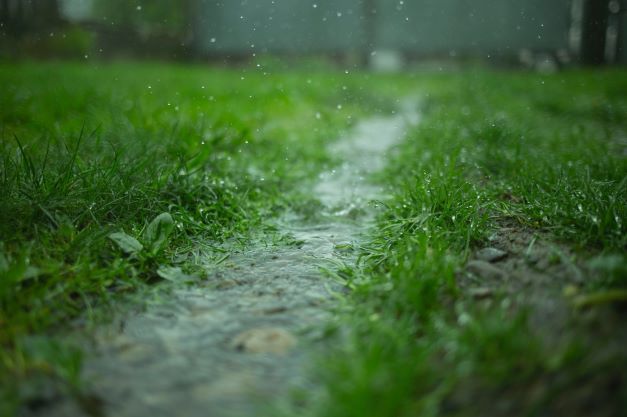Rainfall contains particles that are hazardous to health
Water that we thought was drinkable, captured in this way, is not so drinkable due to chemical elements. They are detected in marine pits, and animal tissues and it is suspected that human beings also have them in their blood.

To eliminate the carcinogenic substances known as PFAS (perfluoro and polyfluoroalkylates) contained in rainwater, a group of scientists from the Institute of Chemistry (IQ) of the UNAM has designed porous materials that filter them in the vital liquid.
These compounds are not naturally degradable, so they are expected to persist in the environment for hundreds or thousands of years, which is why they are also known as "forever or eternal chemicals".
"At first glance, our development looks like a white powder, but it is composed of microscopic crystals designed to capture perfluoro- and polyfluoroalkylated substances present in the liquid," explained Dazaet Galicia Badillo, from the IQ's Department of Organic Chemistry.
These efforts are not exclusive to the National University, as scientists around the world are working on similar projects. "Although it is important to note that the goal now is to degrade PFASs in situ, and not just filter them," said Alonso Acosta, Galicia's labmate, who added, "but if we do it wrong we run the risk of being left with compounds with the same characteristics and shorter carbon chains."
To achieve a flawless process, IQ scientists are exploring a strategy. "The next thing is to add chemical additives and an organic solvent and heat them together, to remove the fluorine atoms from the PFASs. What is obtained in this way are aliphatic chains that can be reduced with bacteria to non-harmful elements."
Although research is still in progress, the aim is to reduce the presence of substances. According to the IQ scientists, this is possible, despite the nickname given to these compounds because, as Alonso Acosta Vera questioned, "chemicals forever" is a relative term.
Warning signs
With approximately one thousand people during the winter and about five thousand in summer, Antarctica is the least inhabited continent, and although much of its territory remains untouched, the little rain and abundant snow that falls there contains PFAS. Therefore, the scientific community concludes that no matter how far and far from the environment, rainwater is no longer drinkable in the world.
This was confirmed by experts from the University of Stockholm and the Swiss Federal Institute of Technology in Zurich after a 10-year investigation, the results of which can be read in the journal Environmental Science & Technology (August 16 issue). According to Elena Tudela Rivadeneyra, professor of the Urban Environmental Area at UNAM's School of Architecture, this is a red light because an important part of the vital liquid we drink comes from rainwater catchment and runoff.
"Let's remember the Nuevo León of a few months ago and those images of dry dams, sun-cracked soils, absent clouds, water distributed in dribs and drabs, and thousands of residents annoyed by the lack of rainfall. We are going through a water crisis and knowing that rainfall brings with it risky particles complicates everything".
PFAS are a group of more than 4,700 chemical agents created in laboratories in the middle of the 20th century; in other words, they have not even been with us for 100 years and are found everywhere: they have been detected in the depths of the sea, in the tissues of animals of all geographies and it is suspected that each one of us, without exception, has some amount in our blood.
Gregorio Rafael Benítez Peralta, from the Faculty of Medicine of the UNAM, explained that exposure to these substances favors a decrease in the response of antibodies, high cholesterol, impaired infant and fetal growth, kidney cancer, ulcerative colitis, thyroiditis, eclampsia and pre-eclampsia (the European Environment Agency adds overweight and infertility to this list).
In Elena Tudela's opinion, it is time to rethink what we do in terms of rainwater management, since rainfall is currently an alternative to supply liquid to marginalized regions, an example of which is PROCAPTAR, a government program based on the installation of a catchment system for drinking water supply at the family level. "Precipitation is the vehicle through which these substances reach humans and affect their health".
The professor added that it is not a matter of discarding these efforts, but of considering the possible effects, and from there generating safer protocols.
Chemicals forever?
PFASs were created in 1938 by the American Roy Plunkett who, at the age of 27, synthesized them by fusing carbon and fluorine atoms. And although at first they were used in war tanks, even in the atomic bomb, because of their hydro- and oleophobic properties, they were soon commercialized in an infinite number of household products, including Teflon frying pans.




